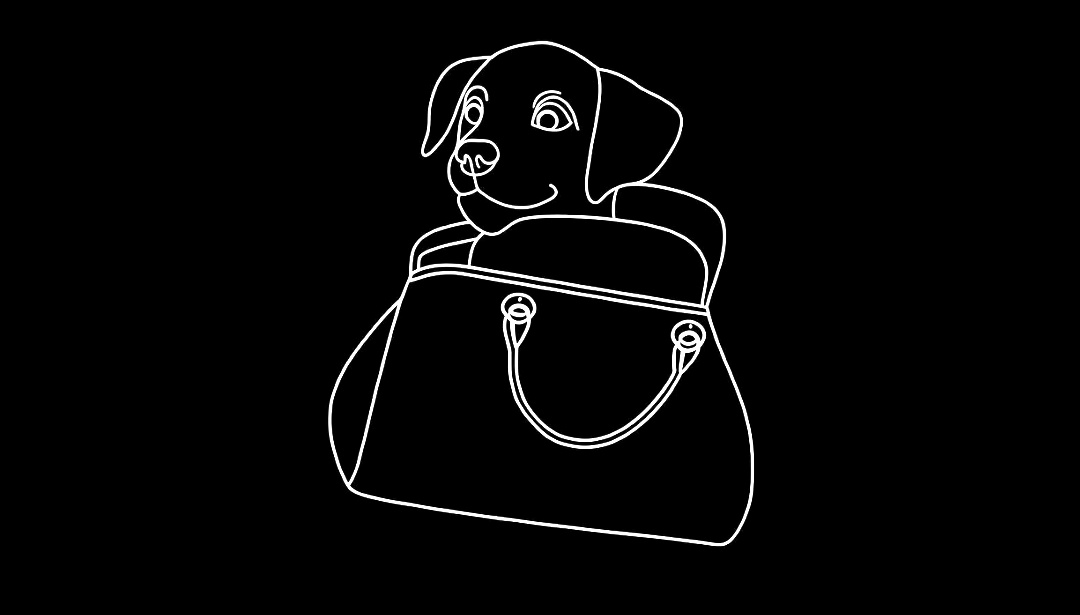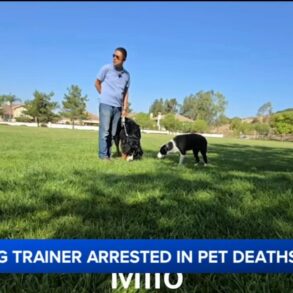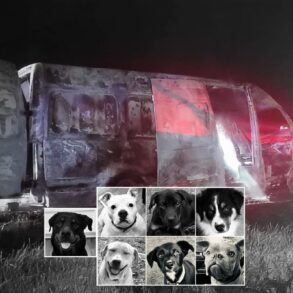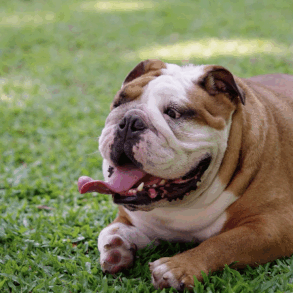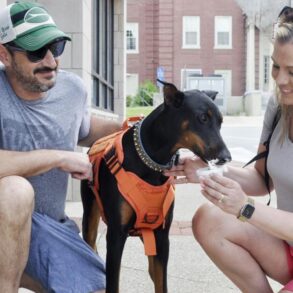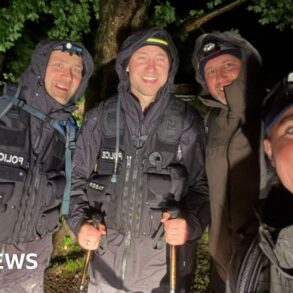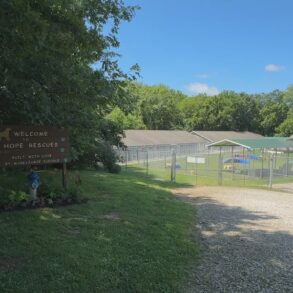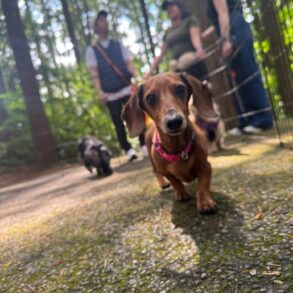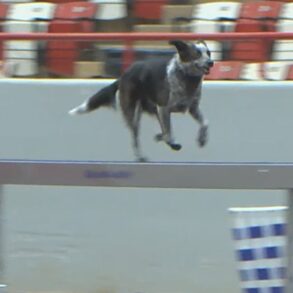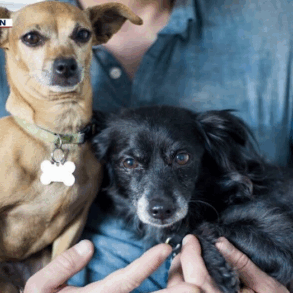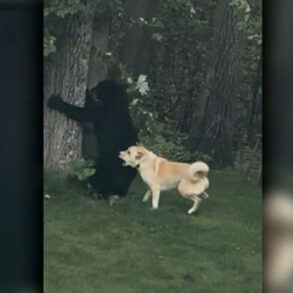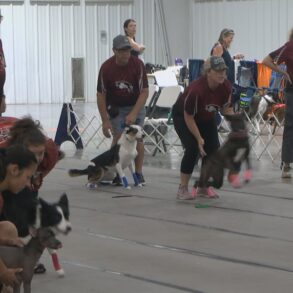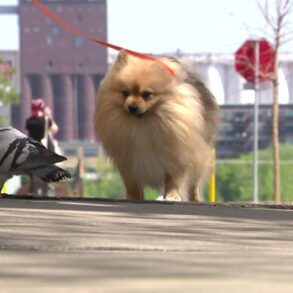There’s a big difference between tactics and strategy when it comes to most facets of life, and training a dog is no exception. We piece together things that work, and many times come out the other end with a passable result. I received a scatter gun approach to dog training until I was introduced to the Huntsmith Silent Command System, and it changed the way I framed dog training.
Advertisement
Sonny Piekarz, of Hay Creek Kennels, was also a student of the Huntsmith system. He attended and hosted seminars and became a Gold-Level Certified Huntsmith Trainer. Today, Piekarz has over 25 years of experience training dogs professionally, ranging from bird dogs to explosive detection dogs, and on down to the run of the mill house pet. His summers would be spent at his kennel in Central Wisconsin, developing a string of dogs for the winter which was spent on the famed Mariposa ranch.
A true student of dog training, Piekarz was always looking for ways to improve his training, to be more efficient, and to create better dogs. From this passion and determination to improve, The Method Dog Training System was born.

The Method Dog Training System
I was invited to Hay Creek Kennels in the spring of 2022 for the first informal seminar, coined The Method Dog Training System. In attendance were accomplished hunters, field trialers, and trainers spanning from Oregon to Ontario. In addition to these well-respected veterans, there were a handful of first-time dog owners with young moldable puppies, and older dogs who were stuck in their ways. Joining him was Jordan Wells, of J. Wells Kennels, based out of Connecticut.
Advertisement
Wells and other seminar instructors were running into the same roadblocks, and that’s what brought Piekarz and Wells together. The issue wasn’t that the Huntsmith System didn’t work for training dogs. Rather, people were changing how they treated and interacted with their dogs on a daily basis, which caused the dog’s behaviors to change. It makes sense, if you think back 20, 30, and 40 years, most serious dog trainers and hunters kept their dogs in a kennel and had a much different relationship than they do today. Dogs are anthropomorphized (attributing human characteristics to an animal, object, etc.) now more than ever. Noticing this, Piekarz and Wells joined together to solve the problem of people being unable to understand and communicate with their dogs.

Starting Training Sessions the Right Way
The warm spring sun bathed the vehicles in the parking area of Hay Creek Kennels, as everyone gathered around for a “tailgate talk.” The first order of business was simply to get dogs out of kennels, and that’s where the magic started.
“Many people are so excited to start training, they rush to get the dog out of their crate, and it’s complete pandemonium,” said Wells. “The result is, you get a dog who is hyped up and not in a mindset to absorb any information.”
I think of it like a kid who is bouncing off the walls after getting out of the car from a long road trip. Do you think you’ll be very effective teaching that child anything until it settles down? A common thread—among various styles of dog training—harps on the importance of short training sessions more often, which is very true. However, if your dog’s brain is going a million miles per hour after getting out the crate, that 15-minute training session is going to be highly ineffective.
Advertisement
This problem is addressed with the chain gang or tie out, requiring the dog to be still and accepting before it can get off the chain to start training. This helps calm the mind and gets the dog ready for training. However, Wells was seeing owners let their dogs jump out of the car, mess around with little boundaries, and then get put on the chain gang where there was intense confinement. The dog was then corrected for misbehaving, which led to resentment. Wells saw an opportunity to change this by putting the dog into a different mindset from the second it got out of the car.
A dumbfounded look splashed across the young pudelpointer’s face as Wells gently blocked the pup’s escape from the kennel using the door. “The tailgate is the first opportunity to have a conversation with a dog,” Wells explains. “The first thing a dog is going to do when approached by a human or another dog, is establish a pecking order. This is my opportunity to have a low-stakes conversation and teach the puppy to look to me for direction and establish that I’m in charge. If I don’t take this dog out in the right state of mind, and we have this “conversation” on the ground where the dog is bolder, I’m going to have to use more pressure and force to establish my dominance.”
This conversation Wells is talking about is simply the interaction between a human and a dog. Piekarz chimed in, “The dog is learning whether you’re teaching it or not.” What he means is, these “conversations” are happening whether you’re paying attention to them or not; it could be as subtle as a dog licking its lips, having soft eyes, or leaning against you. You’re not going to be able to understand what the dog is trying to tell you if you don’t know what to look for, or if you are not paying close attention.
Wells once again reaches for the door as the puppy loads up to make a hasty exit. This is what Wells calls the “anticipatory mindset,” and even in the pudelpointer’s few days spent in the kennel, it has learned to anticipate when a hand reaches for the door because he gets to leave. Once again, the dog’s efforts are stymied by the door. He repeats the motion once again, and this time the pup sits back and doesn’t bolt. Wells explains that the dog has now begun to enter the “learning mindset.” Rather than reacting, the dog is now focused and waiting for direction on what it should do next.
After watching six different dogs, including a pomeranian with aggression issues, a hyperactive pointer, and a laid-back old Labrador, they all did the same exact same thing—albeit at different levels of intensity. This was also the first opportunity to learn how to read a dog. After the fifth time, Wells calmly opened the door of the one-and-a-half-year-old pointer’s crate, and the dog didn’t bolt. While his feet were still, and his body was physically in the kennel, his mind might as well be chasing after birds in the next county. The pointer’s eyes and body language betrayed his mental state. The dog was one twitch away from shooting out of the kennel like a canon. So, the process continued. Wells walked away to work with another dog, returning a few minutes later to test the pointer. It took four or five tries, but you could see with each return, the dog’s eyes softened, movements became less jerky, and muscles relaxed. Finally, Wells slipped the command lead over the dog’s head and cued it to exit the kennel. It was time to learn.
We had spent almost half the day simply working on getting the dog out of the truck, and we hadn’t even touched any of the agility equipment littering the training area of Piekarz’s kennel, much less looked at a training bird. I looked around, studying the faces of everyone in search of boredom, or discontent, but what I saw was a group of people brimming with pride. “Many people feel bold and empowered just by getting the dog out of the crate in a calm manner, and they have more confidence from that understanding of the animal. Magical stuff happens right here at the tailgate,” said Piekarz.
After all the dogs were out of the kennels, Piekarz demonstrated how to use the Wonder Lead—also known as the command lead—not to correct a dog, but rather to interrupt the dog’s thought process. In the past, a quick and well-timed tug on the command lead was used to correct the dog for an undesirable behavior, with the level of intensity being derived from the severity of the infraction. Piekarz has now reframed the correction as an interruption and communicating via the touch of the rope, saying to it, “hey buddy, pay attention.” The goal is for the dog to be looking to the handler for instruction. Working the lead is an art form, and perfecting it takes time. It’s a critically important element in the process and is something a handler needs to work on.

Applying Training in the Field
Recalling back to the 2015 seminar where Piekarz and Wells connected, one of the main points of interest was watching people and dogs really come to life after getting on the agility course. “The dogs started to really respond, and things started to click between handler and dog,” said Wells.
The obstacles covering the training area are used to achieve a multi-faceted goal of removing resistance from the dog while building up its confidence. Resistance can be manifested in a host of different ways, from a dog that doesn’t handle and busts birds while out hunting, all the way to jumping on a visitor at your home. Many of us don’t have a full-blown training set-up where we can run on hundreds of acres with pigeons, quail, or wild birds; but with these obstacles, you’re now able to accomplish much of the same things in a backyard.
This is a point I struggled to grasp. How in the world was a dog walking over a plank, or jumping up on a box, going to help my dog to handle better or stay steady on birds? The same principle holds true for the chain gang. Everything that happens on the chain will manifest itself in the field. That resistance is what’s going to cause problems for you and your dog.
George Lyall, who has been training dogs for over 20 years, is also a Method instructor alongside Piekarz and Wells, and brought some clarity as he spoke while walking a dog over a short Kuranda bed. “If the dog isn’t able to follow me on the lead over this small obstacle, and trust my leadership while it’s at heel, why would we have that mutual trust when the dog is 250 yards away, holding down a bird?” This is a point I really want to emphasize because I can see it being a hindrance for people wanting to try this system.
Piekarz demonstrated this idea when he took one of his eight month-old pointers to a line of weave poles and the dog navigated them with ease, only being directed by a light touch from Piekarz’s Wonder Lead. The reaction I saw from the crowd was mixed, with a lot of people thinking, “I bet that dog has done this hundreds of times, not that impressive.” But what happened next most certainly was, as Piekarz strapped an e-collar around the dog’s neck and led the dog into a 20-acre pasture, followed by the gallery. There he broke the dog away, and once it hit 100 yards, Piekarz took a hard right. Seconds later the dog followed suit and swung to the right. As soon as the dog crossed to his right, Piekarz took a sharp left with a similar result from the dog. “I haven’t used a check chord in five years, and the result has been the same—with dozens and dozens of dogs,” said Piekarz. The dogs are in a learning mindset and are quickly able to connect what is expected of them.
The other obstacles ranged from a small platform and king of the hill, to a teeter-totter and elevated dog walk. All of these were used to elicit resistance from the dog. If an owner would walk up to one of the obstacles with their dog for the first time, odds are the dog would resist; either firmly planting its feet or simply side stepping it to avoid the situation. The owner was instructed to calmly turn around and approach it again. “It might take a dog five attempts to even put its foot up on the platform, but that’s a win,” said Lyall. The next thing you know, that dog was crossing over what once was a daunting impediment, with ease.
There’s no doubt these obstacles elicited fear and anxiety from both handler and dog, but after watching them achieve success with each increasingly difficult challenge, you could see them brimming with pride and confidence. “That’s why we came up with the slogan of ‘Confidence Through Accomplishment’ for The Method,” said Wells.

Personal Application of “The Method”
Eager to try my hand at this new training system, I started with my five-year-old Deutsch drahthaar, Herb, who is very bold in the field, but due to my past training mistakes, can be quite timid in a structured obedience environment. He closely stuck to my side, hoping to not make a mistake, as we approached the first obstacle: a 20″ box. As we approached, he dug in his heels. We stopped, turned around, and calmly approached for another attempt. With his previous efforts to avoid the situation having failed, this time he tried to bail out altogether by side stepping the box. You could clearly see Herb was anxious, trying to balance the desire to please me and his primal fear of the foreign situation. On the third pass, he hesitated, and then quickly bounded on top of the box. I sat and gently stroked his withers, quietly and calmly praising him. This continued until we had navigated over the most difficult obstacles. You could almost feel Herb brimming with pride, as the once nervous and subdued dog was prancing with his head up and tail wagging. I felt my chest swell with pride, and in that instant knew Piekarz, Wells, and Lyall were onto something with The Method.
This post was originally published on this site be sure to check out more of their content.
